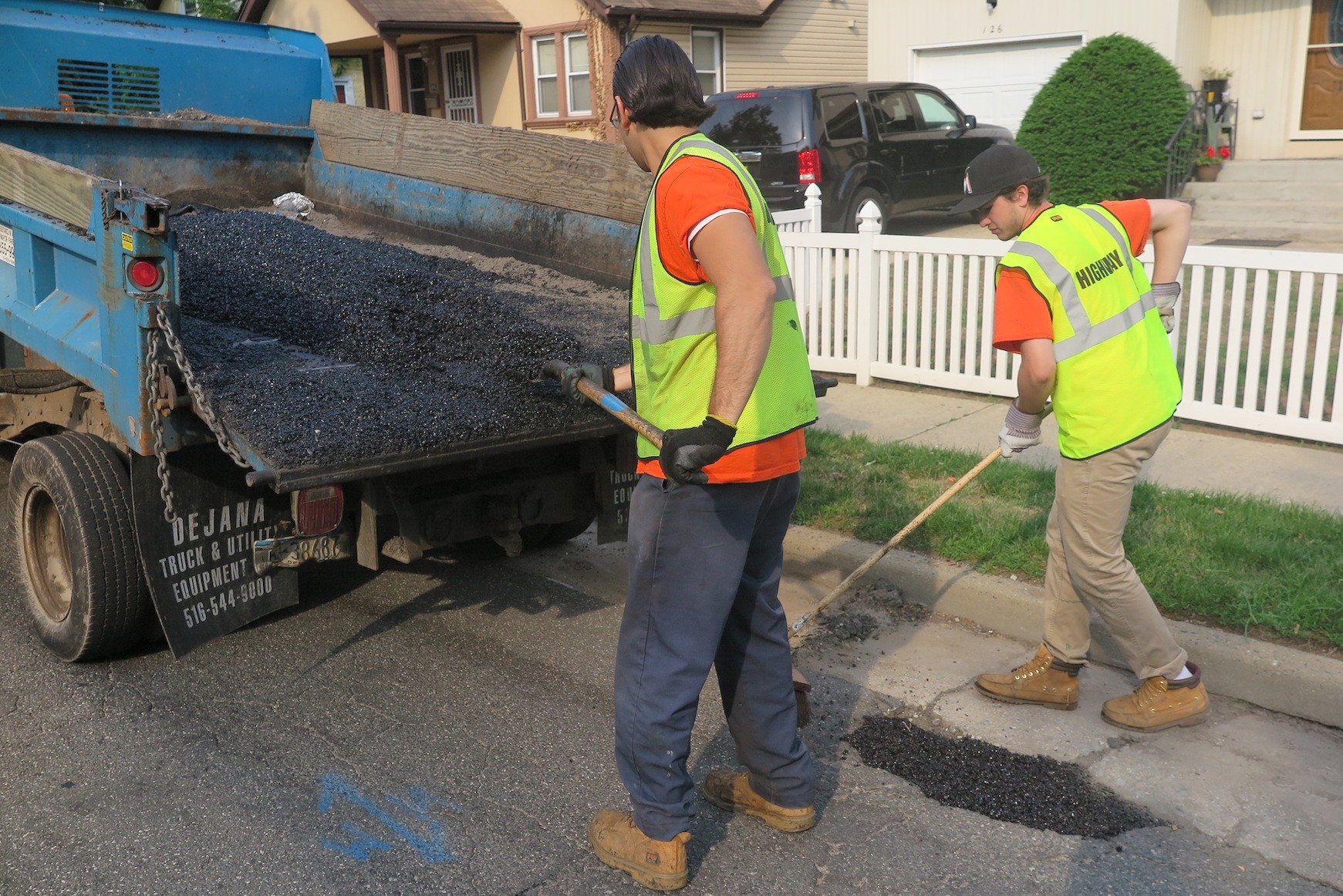Recovering from winter's wrath
DPW works prepare to shift from quick fixes to permanent paving
After several months of temporary pothole repairs on village streets after the harsh winter, Department of Public Works crews are set to begin permanent repaving projects within two weeks.
“Those are the permanent repairs,” said Chris Vela, deputy director of the DPW. “The ones that hopefully won’t need to be touched up again for some time.”
Up to this point, small potholes and other road repairs were made using cold patch, a quick-drying temporary asphalt. The village has made 3,134 repairs this year using the material.
Vela said that the village depends on complaints from residents in order to know where the problems are, even though village employees watch for them during their daily operations.
Vela said the temporary repairs are done quickly after a pothole is reported, typically within 24 to 48 hours, and are addressed in the order that they are received.
Crews began making initial repairs in March when the improving weather permitted. The village typically uses two crews at a time, but this year increased it to three, at times.
“We’ll get a crew out there if we get a warm couple of days where we can make some progress and make repairs,” he said. “We start a more constant process in the spring, after the weather breaks and we are able to get some consistency.”
It takes a crew roughly 30 minutes to repair a pothole, according to Bill Hartig, a DPW highway repair supervisor. He added that each pothole is a different size and shape, meaning that each requires a unique fix. The village has set aside $22,000 for the temporary repairs this year, and so far they expect to finish those within that budget.
Hartig said that a common misconception is that they can be caused or made worse by sanding or salting the roads after a snowstorm.
“Sand or salt don’t hurt the roads, what hurts the road is water and sun,” he said. Water gets under the road and pools there as snow melts. That expands and pushes the road up, with the asphalt designed to adjust with it. When the ice melts, that leaves an air pocket that collapses and disintegrates as cars pass over it.

 50.0°,
Mostly Cloudy
50.0°,
Mostly Cloudy 









